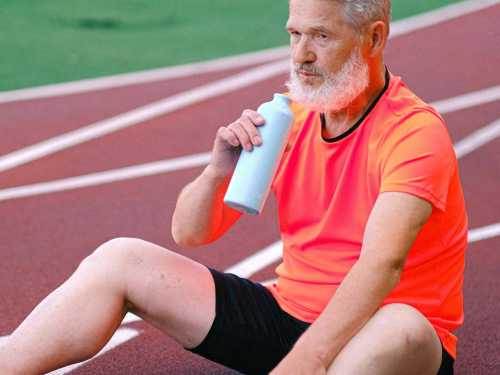
After the age of 60, it is better to give up running and replace it with another activity, such as Nordic walking. This recommendation is a general guideline based on the statistical increase in risks with age, according to the WHO Recommendations on Physical Activity and Sedentary Behavior for Adults Aged 65+, Ukr.Media informs.
The American College of Sports Medicine (ACSM) also provides detailed recommendations for adapting exercise to age, emphasizing an individualized approach and the importance of risk assessment.
It is important to understand that each person's physical condition and training history are unique. This is not about abruptly stopping activity on your 60th birthday, but about increased caution and the need to reassess the appropriateness of running for you, taking into account the changes accumulated in your body over a lifetime.
The main advantage of the recommended alternatives (Nordic walking, swimming, cycling) is that they put significantly less impact on the joints (knees, hips, ankles) and spine than running. This helps reduce the risk of aggravating existing problems or accelerating joint wear and tear, which is common in older age.
Biomechanical studies confirm that running places significantly higher peak loads on lower extremity joints compared to walking, swimming, or cycling (e.g., a study in the Journal of Orthopaedic & Sports Physical Therapy).
Nordic walking, for example, engages the muscles of the upper body, making it more efficient than regular walking, and improves coordination.
Systematic reviews and meta-analyses (e.g., published in the European Journal of Physical and Rehabilitation Medicine) show that Nordic walking can significantly improve aerobic capacity, muscle strength, and balance in older adults.
By the age of 60, people can develop various diseases of the cardiovascular system, which, when stressed by running, can lead to serious complications, such as stroke, heart attack, hypertensive crisis, rhythm disturbances, and thrombosis of various localization.
Many cardiovascular diseases, such as hypertension or coronary heart disease, can develop gradually and have vague or no symptoms in the early stages. Therefore, the risk may be present even if you do not feel sick. Regular medical check-ups (even without complaints) become critical after age 60 to detect potential problems before they cause complications during physical activity.
Leading heart associations, such as the American Heart Association (AHA), recommend mandatory screening for older individuals or those with known risk factors for cardiovascular disease before beginning intensive physical programs.
It is also impossible to ignore the development of damage to the skeletal system due to diseases such as osteoarthritis and osteoporosis.
The mechanism of risk in running for joints (osteoarthritis) is due to the fact that each step when running is a blow, the force of which can exceed the body weight by 2-3 times, creating a significant compressive and shock load on the cartilage. With osteoporosis (reduced bone density, diagnosed, for example, by densitometry), the bones become brittle, and even a relatively small blow or unsuccessful movement while running or falling can cause a fracture, while at a young age this would not have happened.
Clinical guidelines for the treatment of osteoporosis (e.g., from the National Osteoporosis Foundation) emphasize that fall prevention is critical to reducing fracture risk, and activities with a high risk of falls or significant impact should be limited for individuals with low bone density.
Uncompensated hormonal disorders of the thyroid gland will also be a contraindication.
In this case, we are talking more about increased thyroid function with an excess of hormones that make people active. And as a result, you can get serious complications in the form of heart rhythm disorders with all the ensuing consequences.
Thyroid hormones directly affect metabolism and heart function, increasing the rate and force of contractions. With an excess of these hormones (hyperthyroidism), the heart works faster even at rest, and during physical exertion this load becomes excessive.
Medical guidelines for athletes with endocrine diseases (e.g., position papers on sports endocrinology) clearly state that uncontrolled hyperthyroidism is an absolute contraindication to significant physical exertion due to the increased risk of cardiac complications, including arrhythmias.
It is important to know that symptoms of hyperthyroidism (rapid heartbeat, tremors, sweating) can sometimes be mistaken for signs of simply high activity or stress, rather than a signal of a hormonal failure that requires medical intervention.
If a person has been actively involved in sports for a long time, then you can continue to run, but it is important to take into account your reserves.
For those who have been running for years, the body is better adapted, but age-related changes still affect recovery capacity. “Taking into account your reserves” means increasing your recovery time between workouts, being more attentive to signs of fatigue or discomfort, and perhaps reducing the intensity, duration, or frequency of your runs compared to when you were younger. This doesn't mean “running through the pain,” but rather “running smart,” putting your health first.
But you can start running in old age only in a gentle mode after a thorough examination by a therapist and cardiologist.
A “gentle regimen” for beginners over 60 is essentially a transition from walking to running through intervals where walking takes up most of the time. For example, start with 15-20 minutes of total activity, where running takes only 30-60 seconds, alternating with a few minutes of walking. Increase the duration of running intervals and the total duration of the session should be extremely gradual (for example, no more than 10% per week), paying special attention to how you feel and the absence of pain in your joints or chest.
The principle of gradualism (for example, the 10% rule — do not increase volume or intensity by more than 10% per week) is a basic principle of a safe training process recommended by most sports medicine organizations, including ACSM.
It is even better to replace running with alternatives: walking, especially Nordic walking, swimming or cycling.
The advantage of these alternatives in old age is not only in reducing risks, but also in their ability to comprehensively support health: improve cardiac endurance, maintain muscle tone, help maintain flexibility and balance (which is a prevention of falls), and are also often more social types of activity (group classes), which is important for psychological well-being. They allow you to stay active and maintain quality of life without excessive stress on the body.
This is consistent with the general philosophy of recommendations from WHO and other leading medical organizations to maintain functionality and quality of life in old age through regular and safe physical activity.





